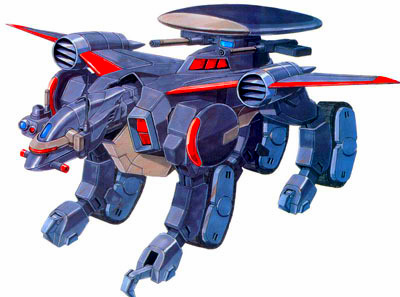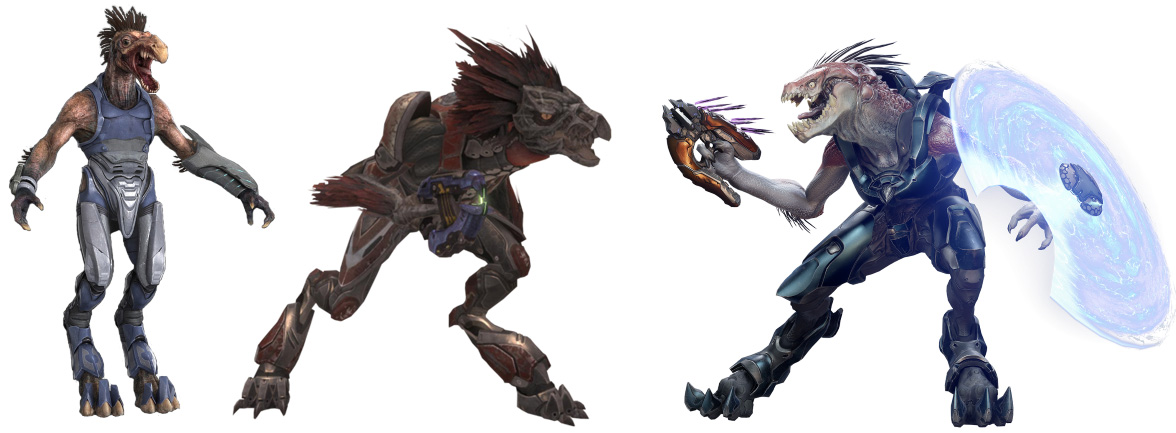 Name: Koros Major (Empress Teta)
Region: Deep Core
Sector: Koros sector
System: Empress Teta system
Suns: 1: Koros
Orbital position: 4th
Moons: 3, Atale
Grid coordinates: L-10
Trade routes: Byss Run, Carbonite Run, Koros Trunk Line
Rotation period: 23.5 standard hours
Orbital period: 359 standard days
Class: Terrestrial
Diameter: 15,700 km
Atmosphere: Type I (breathable)
Climate: Temperate to arctic
Gravity: Standard
Primary terrain: Urban, Plains, Forests, Mountains
Points of interest: Core District, Great Library of Cinnagar, Hyperspace Navigator's Guildhouse, Iron Citadel, Mining Guild regional headquarters, Monument to Lost Navigators
Immigrated species: Human
Primary language(s): Galactic Basic Standard
Government: Absolute Monarchy
Population: 310 billion: (modern); 71% Human, 29% other
1.3 billion: (historic), 71% Human, 29% other
Demonym: Korosian, Tetan
Major cities: Cinnagar (capital)
Major imports: Raw materials, Consumer goods, Processed foods
Major exports: Carbonite, Andris spice, Refined Fuel, Technology
Description: Empress Teta was a ecumenopolis world located in the Empress Teta system, a star system in the Koros sector of the galaxy's Deep Core. Initially known as Koros or Koros Major, the planet's name was changed following Empress Teta's unification of the system in 5000 BBY. The extent to which the capital Cinnagar covered the world also caused many to refer to the world itself as Cinnagar, even in official documentationââ¬âa source of confusion at times. A major supplier of refined carbonite, the planet was a major hub of operations for the Mining Guild. It was located on both the Koros Trunk Line and the Carbonite Run, and for a short time on the Daragon Trail. Empress Teta was the main hub of galactic civilization in the Deep Core and was also one of the few highly urbanized planets in the region to rival Coruscant itself in fashion and amenities.
Empress Teta was a city-planet located in the outer shell of the galaxy's Deep Core, at the terminus of the Koros Trunk Line directly galactic south of Coruscant. With over half its landmass covered by its capital Cinnagar, and vast reserves of carbonite that made the backbone of Empress Teta's economy, the planet was the center of galactic civilization in the Deep Core. While officially a monarchy, the Mining Guild held the true power on the planet in the post-Unification era as the stores of carbonite on the planet gave them the advantage of setting galactic prices on the valuable commodity. Due to the reliance on carbonite economically, mines dotted the surface of the planet and the cityscape, and had at one point threatened to completely shatter the environment of the world. The discovery of the valuable substance on the other six worlds of the Empress Teta system enabled the Mining Guild to do much of its business offworld, allowing the nonurbanized areas of Empress Teta to avoid the environmental damage that befell the other worlds of the system. Where the city had not grown, some areas of wildlife remained, including forests and plains.
In addition to the carbonite stores, Empress Teta was a major source of andris spice within the Core. An authorized supplier of the spice, andris' primary function was as a cure for hibernation sickness, a side effect that befell ancient colonists that had been frozen in carbonite on sleeper ships once they were woke from their slumber. Like most controlled substances, the criminal element on the planet had discovered a way to make andris spice a powerful stimulant and sought ways to sell it on the black market. This criminal problem was an issue until the rise of the Galactic Empire, which stamped out much of the black market dealers. Traffic in the planet's skylanes and orbit was controlled centrally from the Cinnagar Space Traffic Control tower. Cinnagar Control directed ships leaving orbit, arranged for repairs to returning vessels, and kept wanted vessels and those taking unauthorized action in line with its own defense force of Koros Spaceworks interceptors.
Empress Teta was a wealthy and fashionable world, typical of the many affluent planets in the galactic core, only slightly behind Coruscant itself in the amenities it offered. The ornate artistry of the world's architecture was admired, much of it having arisen in the reconstruction that followed the Great Hyperspace War. Galactic-class museums, fine restaurants, and boutiques attracted tourists and local aristocrats; all of whom flocked to Empress Teta's gems of history and luxury. While most Tetans who lived in the Core District of Cinnagar were accustomed to living in luxury, those who lived outside of the Core District of Cinnagar lived a working-class lifestyle. Nobles on the planet traced their ancestry back to the legendary Empress Teta herself; though some historians questioned her actual existence by the rise of the Galactic Empire. Lesser nobles possessed a share of the Mining Guild's activity in the system, allowing them to amass great fortunes.
History
Settlement and unification
The worlds of the Koros system were first colonized before 27,000 BBY by explorers out of Coruscant and Tython, traveling in the first generation ships. These first settlers discovered massive deposits of carbonite ore on all seven inhabitable planets of the system, and the Korosians made a further discovery that space travelers could be frozen in carbonite in a state of suspended animation, allowing them to survive the long trips between stars. The invention of this process saw the end of the generation ship as a means of travel and the development of sleeper ships, which enabled Coruscant to settle worlds across the galaxy. As a means of combating hibernation sickness, the Korosians also first discovered the use of spice as a therapeutic agent, allowing travelers in sleeper ships to make the journey in a greater degree of safety. The Koros system's deposits of andris spice, combined with the carbonite resources, made it a dominant power in the pre-hyperdrive years. The planet of Koros Major became a boomworld, and the new Mining Guild made it one of their strongholds. With the invention of the hyperdrive, hyperspace scouts carved out the hyperspace route known as the Koros Trunk Line or "Carbonite Pipeline", running from Koros to Coruscant, shortly before the foundation of the Galactic Republic in 25,053 BBY. With the foundation of the Republic and its subsequent growth, the route saw trillions of tons of carbonite move out to Coruscant while explorers moved in to Koros to take advantage of the unexplored Deep Core. As the outpost on the only major route into the Deep Core, Koros became the primary stop in the region and the largest settlement on the new Deep Core frontier, and almost overnight turned into a booming city-planet. The Hyperspace Navigator's Guild established their headquarters on Koros, launching explorations to find new ways through the densely packed stars of the Deep Core. The rising star of Koros proved to be a major rival to the Core world of Kaikielius.
While the carbonite mines of Koros were nominally under the control of Coruscant, illegal claimants attempted to take advantage of the world's resources. Supreme Chancellor Fattum of the Republic granted ownership of the system to the Teta aristocrats in a scandal that ultimately ended his administration, but the system's new nobility ignored the smuggling of carbonite. In 5010 BBY, however, Empress Teta took the throne and launched the Unification Wars, an effort to eliminate all non-government mining settlements and unite the seven worlds of the Koros system under a mutual defense and trade alliance. Teta's wars, backed by Coruscant as a triumph of law and order, were one-sided, brutal, and ultimately successful, bringing all the worlds of the system but Kirrek under her control. In 5000 BBY, the Jedi Odan-Urr was dispatched to Koros to aid Teta and her Jedi advisor Memit Nadill in ending the war, and his knowledge and application of battle meditation enabled Teta to take Kirrek with minimal casualties and seize victory in the war. Odan-Urr was assigned on a long-term basis to the Koros system to ensure the security of Teta's realm in the Republic's interest. For this Empress Teta began to rival Coruscant in the Deep Core. The detention facilities of Koros, meanwhile, were used to hold accused war criminals awaiting trial.
Wars with the Sith
Shortly after Teta's victory, two hyperspace scouts of Koros, Gav and Jori Daragon, incurred the wrath of the local merchant lord Ssk Kahorr when one of their routes, the Goluud Corridor, proved to be unstable and cost Kahorr valuable merchandise. When Kahorr sent assassins after them, the Daragons stole their own ship, Starbreaker 12, out of hock and, fighting their way past the planet's defense forces, set off to find one big route to settle all their debts. They were declared criminals by Empress Teta, who vowed to administer the appropriate justice to them when they were found. Shortly after, Odan-Urr had a vision of danger from the Sith Lords, exiled from the Republic millennia before, which he presented to Teta. Teta brought the Jedi with her to Coruscant to present his warning before the Senate, but the Senators dismissed his claims. Upon her return, Teta put the factories of Koros into action, producing ships and materiél in preparation for coming war.
The Daragons, meanwhile, had found a new route, and more; after a blind leap into hyperspace, they arrived at Korriban, land of the Sith Empire and the exiled Sith Lords. Naga Sadow, Dark Lord of the Sith, turned Gav to his side and allowed Jori to escape in Starbreaker 12, tracking her back into the heart of the Republic. Upon arriving at Koros, Jori sent off an emergency message warning of the Sith, but her vessel was recognized by Cinnagar Control and forced to the ground by the defense forces. She was placed under arrest, and her warnings about the Sith were dismissed. Odan-Urr, however, found that his trip to Coruscant had not been entirely fruitless; other Jedi heard his warning, and his master Ooroo came to Koros to confer with Teta and the Jedi. Jori, escaping from the prison colony on Ronika, returned to Koros and infiltrated Teta's palace to speak with the Empress. Her statements about the Sith confirmed what Teta had heard from the Jedi; the Empress summoned Koros' defenses and prepared to strengthen the system as a bastion against the coming invasion. Meanwhile, having finally mustered his forces, Naga Sadow followed the Daragons' route back to the star Primus Goluud, where his forces split to launch a series of simultaneous attacks on Republic worlds, initiating the Great Hyperspace War.
On Koros, Teta accepted the aid of the former Kirrek rebels in exchange for amnesty. The Tetan fleet launched from Koros Major to engage the Sith forcesââ¬âunder the command of Gav Daragonââ¬âin orbit above. As the Sith lay siege to the city below, Gav headed to the surface in an attempt to disengage the Korosian defenses and force a near-bloodless victory. When his bodyguards killed a friend of his family's in front of Jori, Gav fled the planet in horror, taking his flagship back to Primus Goluud to kill Sadow. With the Sith offense collapsing on every front, Jori and the Tetan fleet followed, driving Sadow back to the Sith Empire, and ultimately into exile on Yavin 4. The battered Tetan fleet returned home, victorious, to begin the long process of recovery. Odan-Urr salvaged the remnants of the Sith fleet in orbit of Koros for artifacts, taking them with him to build a library on Ossus.
In the wake of the wars, Koros Major underwent a period of reconstruction. The name of the system and planet were officially changed to "Empress Teta", though the planet continued to be known as Koros Major for centuries to come. Koros became the capital of a small empire in the Deep Core, and the carbonite mines brought wealth to all of the world's inhabitants and turned the planet into a prosperous and peaceful model world that much of the Deep Core attempted to emulate. Koros finally eclipsed its rival Kaikielius, driving the latter planet into ruin in an attempt to compete. Teta's descendants continued to rule the system, but over the next millennium they were increasingly forced to share power with the commercial interests that controlled the carbonite mines.
In 3997 BBY, two descendants of Teta, Satal and Aleema Keto, fell to the dark side of the Force and formed a cult they named the Krath. After getting the Tetan military into their pocket, the Ketos staged a coup against Satal's parents, the rulers of the system. On a carbonite smelter above Empress Teta, the Ketos and their Krath allies arranged a demonstration of their Force powers to their parents and guards, torturing their tutor Korus and, eventually, lowering the Lord Keto to his death in molten carbonite. The Krath response to resistance was quick; Aleema suffocated a group of insurrectionists on Empress Teta who planned to attack the palace. However, the planet still resisted the new rule, the last in the system to hold out against the Krath. Despite heavy resistance, Teta fell to the Krath, after the installation of a military satellite over the planet. Despite a joint task force of Republic soldiers and Jedi assault the Krath warship, Aleema Keto's powerful sorcery was able to destroy moral within the opposition forces. The Republic, led by Captain Orley Vanicus and Jedi Ulic Qel-Droma aboard the Reliance I, was too late to prevent the planet's fall and were forced to retreat.
While the Jedi Order gathered on Deneba to discuss the Krath reign on Empress Teta, the Krath tightened their grip on the planet. Holed up in the Iron Citadel, Satal and Aleema Keto held mass execution in public squares to inspire loyalty through fear. During one such execution, the Jedi Knight Ulic-Qel Droma cut down a would-be assassin before he could kill Aleema Keto in a bid to gain her trust and infiltrate the Krath. Little did Qel-Droma know, the Ketos had devised this ruse to gain the power of a Jedi within the Krath, and slowly began twisting him to the dark side. Believing he was working in the best interest of his undercover mission, Qel-Droma was seduced to the dark side and became an enforcer of the Krath on Empress Teta. despite the best efforts of several Jedi task forces to rescue Qel-Droma, the fallen Jedi believed that he had dedicated to much time to the undercover assignment to turn his back on it. Shortly thereafter, the planet was visited by fallen Jedi Exar Kun, who desired to destroy those who could potentially impede his own Empire. To this end, he attacked Keto and Qel-Droma, but was interrupted by the spirit of the millennia-old Dark Lord Marka Ragnos, who advised them to ally instead of competing. Thus was formed the new Brotherhood of the Sith, with Exar Kun as Dark Lord of the Sith. The Krathââ¬âunder the rule of newly-christened Sith Lord Qel-Dromaââ¬âbecame an integral part. This signaled the beginning of the true greatness of the Krath. Within six months, the Tetans had conquered large territories and imposed several defeats on the now-strained Republic military. Qel-Droma's alliance with the Mandalorians led by Mandalore the Indomitable further strengthened the cult's influence and strengthened the Empire on Empress Teta. With the Great Sith War and the Krath Holy Crusade in full swing, Empress Teta became the heart of all military operations for the Krath and Sith Brotherhood.
However, as its military campaign met increasing and determined Republic and Jedi resistance, the Krath/Sith alliance began to fall apart due to internal tensions; Keto began a campaign of more or less open infighting, causing Qel-Droma's capture by the Jedi and murdering his Tetan supporters. Once freed by Kun, the rogue Jedi retaliated by sending Keto on the mission that would prove her doom. When Qel-Droma was eliminated by the Jedi Nomi Sunrider and Kun was defeated by a combined Jedi armada and presumed dead, there was no one left to lead the Krath, and the cult quickly fell apart from internal strife. Leaving behind their stronghold on Teta, the planet was littered with ancient relics from the era. As the city-planet cast off the Krath, new construction quickly consumed the detritus of the past.
The rise of the Empire
Empress Teta was one of the few Galactic Republic member worlds in the Deep Core by the start of the Clone Wars, and despite the lasting reign of the Keto family, the world was completely under the pall of the Mining Guild. When war was declared by the Confederacy of Independent Systems, Empress Teta was forced to support the Separatists against the Republic. Those nobles who remained loyal to the Galactic Senate expatriated to Coruscant to avoid the conflict in their home system. When the war came to a sudden conclusion and the Mining Guild labeled many of its leaders as traitors, and turned them over to the Empire, naming the expats on Coruscant to positions of power to gain favor with the Emperor. Turning the carbonite over to the Empire at a discounted price, Empress Teta curried favor with Imperial Coruscant, becoming a major Imperial Hyperspace Security Net checkpoint on the perimeter of the Deep Core Security Zone. Astrogation to the planet became especially difficult under the Imperial rule, as it began appearing as Koros, Cinnagar, or Koros Major as a plot by Imperial Intelligence to subtly reroute non-essential traffic. The ancient history of the planet also became muddled with the rise of the Imperials. Known as the Qel-Droma Epics, this series of poems recounting the involvement of the Jedi on the planet around the time of the historical Empress Teta's reign was said to be Jedi propaganda rather than an accurate historical account.
The planet's location in the hard-to-navigate Deep Core made it easy to defend, and the New Republic planned to evacuate their government to the planet in the eventuality Coruscant fell to the Yuuzhan Vong. However, Senatorial opposition to the plan caused it to be shelved, and when Coruscant actually fell, the government fled to Mon Calamari. It can be assumed that even after the Yuuzhan Vong War had ended Empress Teta continued to rival Coruscant in the Deep Core, continuing with the Galactic Alliance.
Places of Interest
Cinnagar
Cinnagar was the capital city of Empress Teta and the location of its ruler's palace. Due to the sheer size of the cityââ¬âit covered half the planetââ¬âthe whole world was sometimes called Cinnagar. This was a place where the citizens could experience the sights and glamor of the Core Worlds in the Core District. Many shops and restaurants in Cinnagar were based on a certain planet in the Core Worlds; for instance, the Alderaan Museum of Fine Arts featured many art displays, Coruscant Fashions sold the latest Core Worlds styles, and Club Corellia offered many different cuisines from around the Core Worlds as well as all-night dancing and entertainment.
By the time of the Clone Wars, Lord Sargo VenHalgon lived in a palace there. The Great Library of Cinnagar also existed there by this time.
The City of Cinnagar was once controlled by the Krath, a Sith secret society, who ruled with an iron fist. The rulers, Aleema and Satal Keto, executed any who opposed them. Cinnagar was attacked by a Jedi task force during the Great Sith War, in an attempt to bring Ulic Qel-Droma back to Ossus. They let Ulic choose his path. He chose to stay. They left him with the Krath.
Core District
The Core District of the city Cinnagar was a city district containing a seemingly endless number of high-end retailers, restaurants, boutiques, and museums on the planet Empress Teta.
The Core District was the most upscale part of the city of Cinnagar. Bordering the Royal District, the businesses within the district were owned by the planet's working-class who sought to share the culture of the Core Worlds with the city's populace. The architecture within the district was varied and diverse, representing the classical architecture from across the galactic core. The Core District represented the center of culture within the Core region of the galaxy.
Club Corellia
Club Corellia was a night club located within the Core District of the city of Cinnagar. Like many of the attractions within the Core District, the club's architecture represented a specific planet within the Core Worlds region of the galaxy; specifically Corellia. Club Corellia specialized in food, drink, music, and dance from a variety of planets from the galactic core.
Coronet Nova Steakhouse
Coronet Nova Steakhouse was a high-end restaurant located within the Core District of the city of Cinnagar. Like many of the attractions within the Core District, the restaurant's architecture represented a specific planet within the Core Worlds region of the galaxy; specifically Corellia. The Nova specialized in food and drink from Coronet, the capital of Corellia.
Alderaan Museum of Fine Arts
The Alderaan Museum of Fine Arts was a museum located within the Core District of the city of Cinnagar. Like many of the attractions within the Core District, the museum's architecture represented a specific planet within the Core Worlds region of the galaxy; specifically Alderaan. The fine arts presented in the museum were a collection of works from the galactic core.
Coruscant Fashions
Coruscant Fashions was a high-end retailer located within the Core District of the city of Cinnagar. Like many of the attractions within the Core District, the store's architecture represented a specific planet within the Core Worlds region of the galaxy; specifically Coruscant. Coruscant Fashions specialized in fashion from the cities of Coruscant and other planets in the region.
Kuat Citywear
Kuat Citywear was a high-end retailer located within the Core District of the city of Cinnagar. Like many of the attractions within the Core District, the store's architecture represented a specific planet within the Core Worlds region of the galaxy; specifically Kuat. Kuat Citywear specialized in fashion from the cities of Kuat and other planets in the region.
Hyperspace Navigator's Guildhouse
The Hyperspace Navigator's Guildhouse on Koros Major was the original headquarters of the Hyperspace Navigator's Guild. An ancient structure of wood construction, the Guildhouse was raided by the Galactic Empire and forced to sell off most of their collections in order to remain open.
An ancient Tetan mansion erected in the city of Cinnagar, the Hyperspace Navigator's Guildhouse was constructed from local wood that had gone extinct by the time of the Galactic Empire. Owned by a member of the Tetan nobility, it was eventually purchased by the Navigator's Guild who expanded it several times to include starship docking and repair bays and a vast library of hyperspace routes. The original wooden mansion remained, although with state of-the-art computer and communications systems installed. As the guild grew and expanded, they relocated elsewhere, leaving the facility open as a regional guildhouse for explorers and spacers to rest and study between expeditions into the Deep Core and Wild Space.
Relocating several times over its long history, the original wooden mansion sat atop a tower in the shape of the eight-pointed navigator's compass. Containing many docking bays, landing platforms, and computer server databases within the tower, the guildhouse was the largest it ever was during the Imperial era. Despite this, the guildhouse suffered considerably under the reign of the Empire, as the Imperials scanned and copied the Guild's databases and retroactively classified several of the routes contained within. To maintain their expenses, the Guild was forced to begin charging visitors a steep access fee. In front of the tower's street level access was the Monument to Lost Navigators, a carbonite depiction of the patriarch of the Coruscanti family that blazed the Koros Trunk Line.
Great Library of Cinnagar
The Great Library of Cinnagar was a massive library contained within a bronze-domed building in the city of Cinnagar on Empress Teta.
A massive library in the city of Cinnagar, the Great Library was located on the borders of the Core District and the Royal District. Designed in deference to the architectural wonder that was the Senate Building on Coruscant, the mushroom-shaped building was filled with exhibits of Empress Teta's history. The collections of the Great Library comprised the greatest collection of information on the Koros system, containing billions of stories, writings, holovids, novels, paintings, artifacts, and transcripts. While many of the citizens of the Galactic Empire believed that the Qel-Droma Epics were a fiction propagated by the defunct Jedi Order, the museum took the view that the Epics were an accurate depiction of history. To this end, the Great Library featured a vast museum dedicated to the era of the Unification Wars and the subsequent Great Hyperspace War. Artifacts from this era and artistic recreations filled the displays, which most Tetans honored with respect and awe.
Royal District
The Royal District of the city Cinnagar was the primary district of the royal family and prominent nobles that ran the government of Empress Teta.
Originally, the Royal District fanned out from the Iron Citadel, the massive residence of the Tetan Monarchy. The Royal District underwent massive changes after the Great Sith War, with the Iron Citadel disappearing from the landscape and replaced by a new, resplendent Royal Palace. Bordering the Core District, the Great Library of Cinnagar was located right on the border.
Cinnagar Royal Palace
The Royal Palace was a massive residential facility at the heart of the Royal District of Cinnagar. Home to the ruling monarch of the planet Empress Teta and the seat of government in Imperial times, the Palace was constructed over the foundations of the Iron Citadel according to legends.
Located at the heart of the Royal District, the Royal Palace was a massive complex of nine interconnected spires that towered over the cityscape. The golden spires represented the nine worlds of the Empress Teta system: Keres I, Gillad, Mozos, Empress Teta, Tryast, Phiris, Phoros, Ronika, and Keres II. Located along the equatorial axis, the rising sun would hit each spire in the same order that the planets orbited the star. Connected by low walls, the grounds surrounding the spires was a sprawling garden complex with local and imported flora. Many cottages were located within the gardens to house favored nobles from each world. At the core of the Palace was a block of black iron which was believed to have been brought from the ruins of the Iron Citadel. Whatever the truth, the monument stood as a testament to a lost age of Empress Teta's history.
Iron Citadel
The Iron Citadel was a massive palace at the heart of the Royal District of Cinnagar. Home to the ruling monarch of the planet Empress Teta and the seat of government in ancient times, the Iron Citadel was conquered by the Krath cult during the Great Sith War and was a source of great terror to the populace of Empress Teta during the war. By the time of the Galactic Empire, the Iron Citadel had passed into legend, with many outside the system doubting that it ever existed at all. Nobles on the planet insisted that it formed the foundations of the modern Cinnagar Royal Palace, with others believing that it was buried deep beneath the modern cityscape and serving as a shrine for surviving Krath loyalists.
Established as a residence for the royal family of Koros Major, the Iron Citadel was a gargantuan facility at the heart of the city of Cinnagar's Royal District. Named for its iron battlements, the Citadel was a testament to Koros' military prowess as it had never fallen to enemy forces. The seat of the famed Empress Teta, it was from the Iron Citadel that Teta waged the Unification Wars and improved the political system within the entire Koros system. Having repelled invasion and infiltration by rebels, the Galactic Republic, Mandalorians, and the Jedi Order, the Iron Citadel was eventually violated by the Krath cult during the Great Sith War. Having murdered their parents and secured the throne for themselves, Satal and Aleema Keto formed the Krath cult and converted the Iron Citadel into their command center. From their war room, the Ketos initiated the Krath Holy Crusade that swept the system and the region.
Satal Keto tortured Ulic Qel-Droma in the dungeons deep within the bowels of the Citadel, where political dissenters were ritualistically hanged from cavern walls. After Qel-Droma gained the trust of Aleema Keto, he was permitted access to other parts of the facility, though still a guest without permission to leave. While within the Citadel, Qel-Droma confronted Satal Keto on a balcony where he fought and killed the leader of the world. As the new joint leader of the Krath with his lover Aleema Keto, Qel-Droma commanded the forces within the Citadel and had its weapons systems upgraded to better defend the palace from Republic assault. When the Dark Jedi Exar Kun entered the Citadel unbidden, Qel-Droma dueled the former Jedi to a draw before the long dead Sith Lord Marka Ragnos named them Dark Lords of the Sith. The Iron Citadel's fate after this monumental occasion remained lost to history; some accounts described the Citadel's destruction by the Republic forces during the ejection of the Krath from Empress Teta. Others claim that the Citadel formed the foundations of the modern Royal Palace at the heart of the Royal District, claiming the twisted block of iron at the heart of the Palace's gardens is a portion of the battlements from the Citadel's walls. Still others spread a rumor that the city had swallowed the Iron Citadel, and that it still stood intact beneath the city surface as a shrine for those Krath loyalists that still existed millennia removed from the Great Sith War.
Despite being regarded as a legendary site, treasure hunters during the Imperial era believed that they could make a fortune by finding the remains of the Citadel and raiding its contents. Among the rumored artifacts to be housed within the ruins were the lightsaber crystal of Ulic-Qel Droma, the Krath translation talisman of Satal Keto, and an operational Basilisk war droid.
Cinnagar war room
This war room was located in Cinnagar, the capital city of Empress Teta, within the Iron Citadel. It was used by Mandalore the Indomitable during the Great Sith War.
Cinnagar residential district
The Cinnagar residential district was an area of Cinnagar, capital city of Empress Teta.
The residential district was a crowded district with a public plaza at its center. Empress Teta herself led a royal procession through the streets of the residential district prior to the Great Hyperspace War, informing her subjects that the seven worlds had united.
Monument to Lost Navigators
The Monument to Lost Navigators was a statue in the city of Cinnagar, the capital of Empress Teta. Commemorating those that had lost their lives exploring new hyperspace routes, the statue stood in front of the Hyperspace Navigator's Guild's headquarters. Made of carbonite, the statue was carved in the likeness of the ancient patriarch of a Coruscanti family that was said to have blazed the Koros Trunk Line aboard a generation ship.
Cinnagar Space Traffic Control tower
The Cinnagar Space Traffic Control tower was the first place Jori Daragon tried to report the incoming Sith invasion.
Aarrba's Repair Dock
Aarrba's Repair Dock was an establishment on Cinnagar owned by Aarrba the Hutt circa 5000 BBY. It was a starship repair yard and was capable of housing several space-going vessels simultaneously. After Aarrba's death in the Great Hyperspace War, Jori Daragon took it over.
|












